Five years ago, I wrote about allowing e-bikes on mountain bike trails, and since then, my stance has slightly evolved, but remains generally steadfast. In the time since my last piece, more studies have been conducted on the positive impact of e-mountain bikes. And anyone who lives in an area with nearby mountain bike trails has seen that they’ve become more and more popular, whether you’re a fan or not.
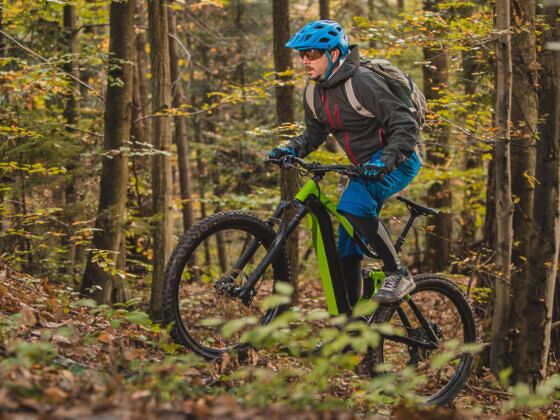
I’m a mountain biker who lives in western Colorado, and I and actively supports conservation and trail-building efforts, both locally and nationally, through financial donations, volunteer efforts, and political advocacy. I’m also a journalist who regularly reports on conservation and sustainability issues. I don’t currently own an electric mountain bike, but have ridden them on a few occasions. I believe in establishing and enforcing regulations to keep trails safe and enjoyable, but I agree with local policies enacted by agencies (including the US Forest Service, the Bureau of Land Management, and state and local parks and wildlife divisions), all of whom have ruled to allow Class 1 (pedal-assist) e-bikes on non-motorized trails.
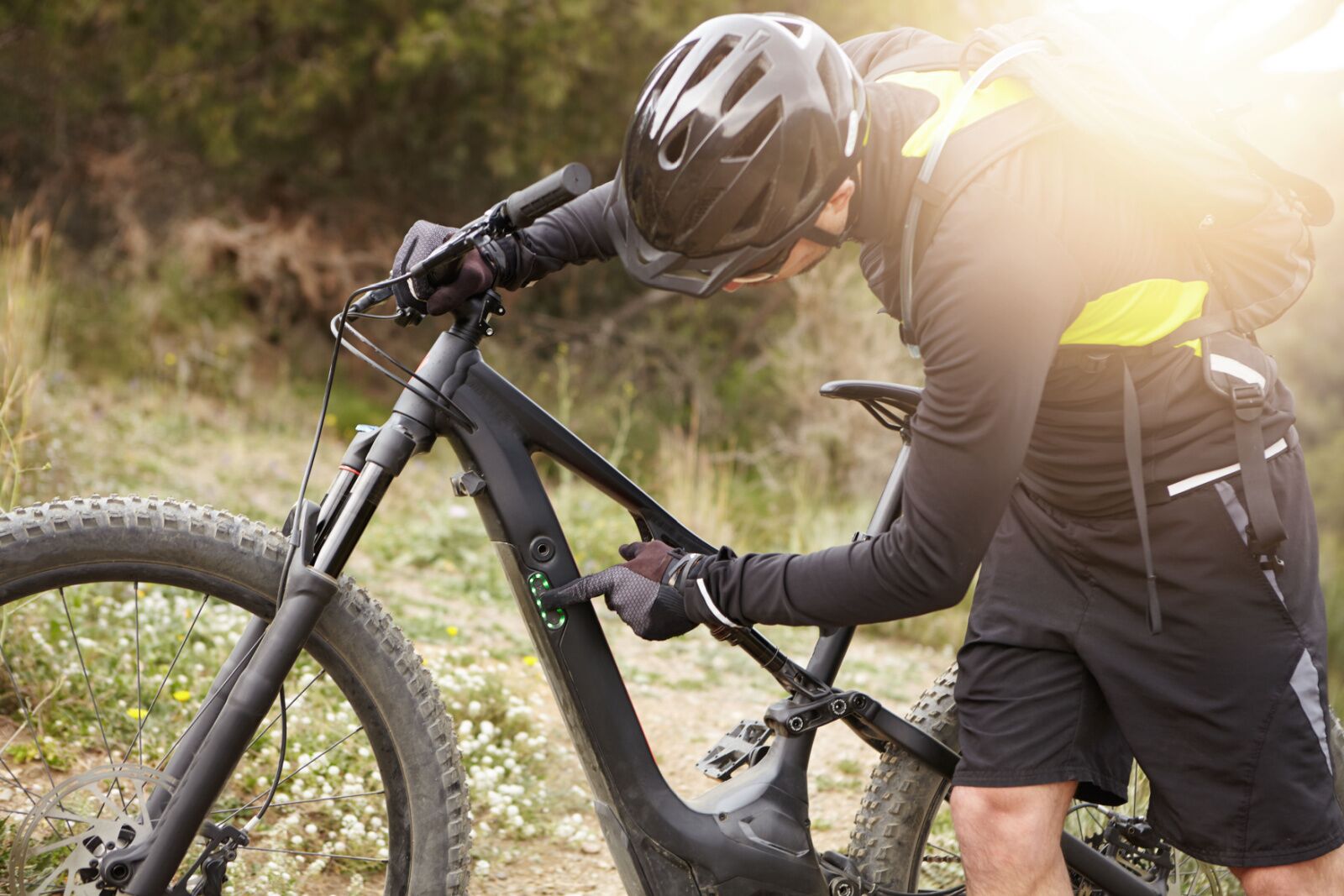
Class 1 e-bike riders can adjust the level of assistance from the bike, but they have to pedal to keep the motor on. Photo: Cast Of Thousands/Shutterstock
That’s because pedal-assist bikes are not motorized vehicles. There are three classes of e-bikes: pedal-assist bikes capped at 20 miles per hour (Class 1), e-bikes with a throttle that require no pedaling to move forward (Class 2), and e-bikes with a max speed above 20 miles per hour, throttle or not (Class 3).
On a pedal-assist bike, the motor does not engage unless you pedal. If you don’t pedal, the bike won’t move, unlike a throttled bike, where you can just sit on it and it’ll go forward. According to a study published in ScienceDirect, speed and distance traveled on the average pedal-assisted mountain bike ride are only slightly higher than the averages for rides on a traditional (non-motorized) mountain bike. And allowing e-bikes on trails decreases the barriers to accessing public lands for users with physical disabilities, time impairments, or other limiting factors — and that’s a win for conservation advocacy.
E-bikes must be embraced, even outside city limits
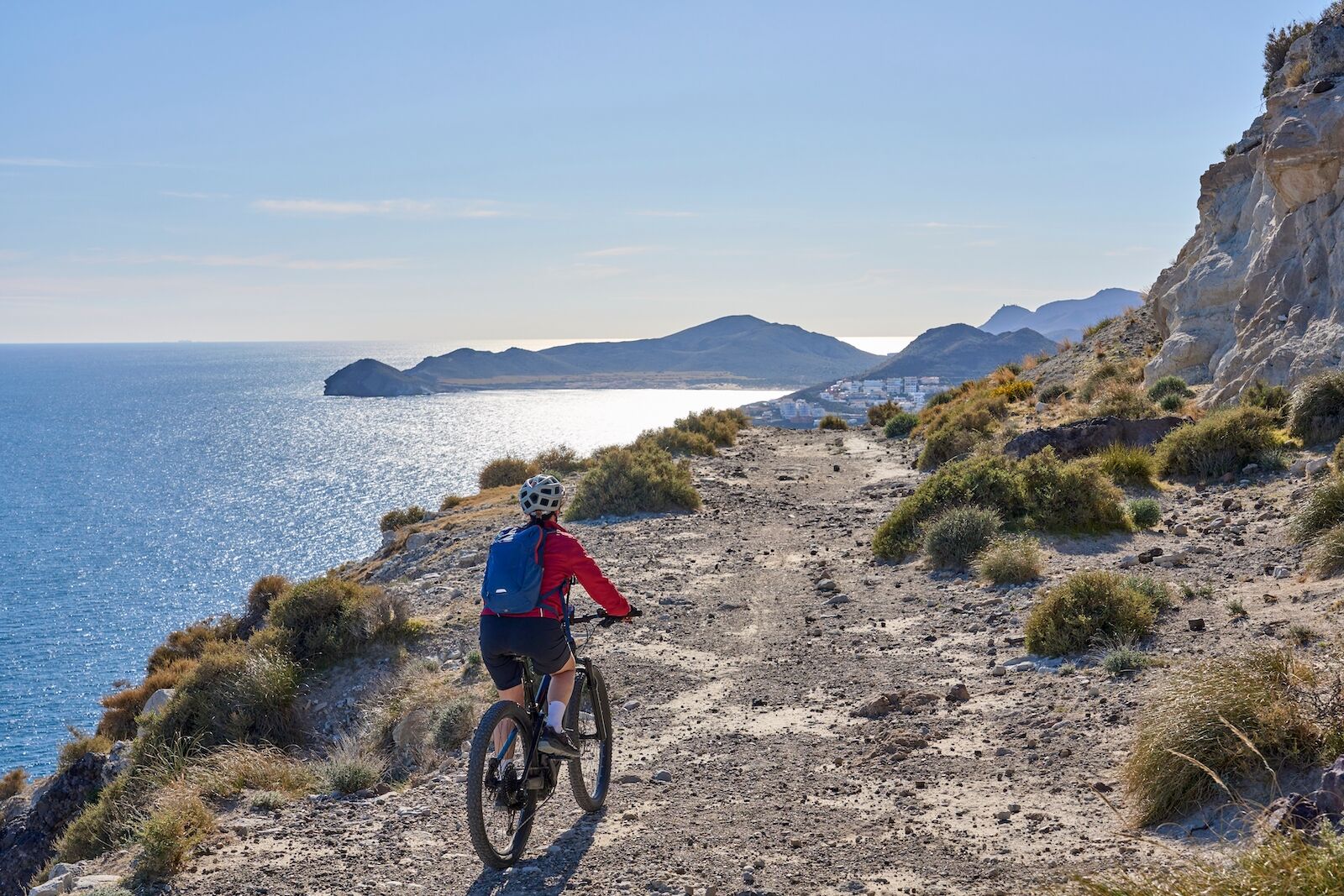
Photo: Umomos/Shutterstock
Here’s the thing: I am, admittedly, a self-proclaimed e-bike evangelist. My family owns two e-bikes, and in 2023 I logged nearly 2,000 miles on mine. I will preach from the highest mountain their power to revolutionize urban transit, cut global carbon emissions, and get people out of the giant, speeding hunks of metal that have destroyed cities the world over (another topic I’ve covered). If I reach the top of that mountain with a bit of pedal assist, that just gives me a few extra minutes to espouse my views from the pulpit.
I hear your judgment: “But electric mountain bikes are different. They’re not used for transit, and e-bikes don’t have the same positive impacts in rural areas or mountain towns.”
My response is simple: That’s bullshit.
To prove this, let’s look at Colorado’s Grand Valley, the place I’ve called home since 2019. I live in a town of 2,500 people in a rural region 15 miles from the nearest city center, and that city center is a far cry from being a coastal megalopolis. Yet everyday, I see e-bikes — both the street and mountain variety — whizzing by my house en route to the grocery store, trailhead, brewery, or office. I regularly e-bike the 15 miles into Grand Junction, and though it’s not technically a mountain bike, my bike’s burly, two-inch-thick tires are what make the commute possible, given that dedicated bike lanes are scarce and the ride roughly transitions between pavement, dirt, and concrete.
Mountain biking is an unmistakable part of the culture and economy of Colorado’s Western Slope, to the point that the sport literally saved the town of Fruita from bankruptcy. One of our primary trail systems is named the “Lunch Loops,” not least because its proximity to downtown Grand Junction means that everyone from nine-to-fivers and students at the local university can get out for a lunchtime ride. Riders so frequently pedal around town and between trailheads on pedal-assist bikes that to counter the positive impact these bikes have had on sustainability efforts and outdoor access is downright impossible.
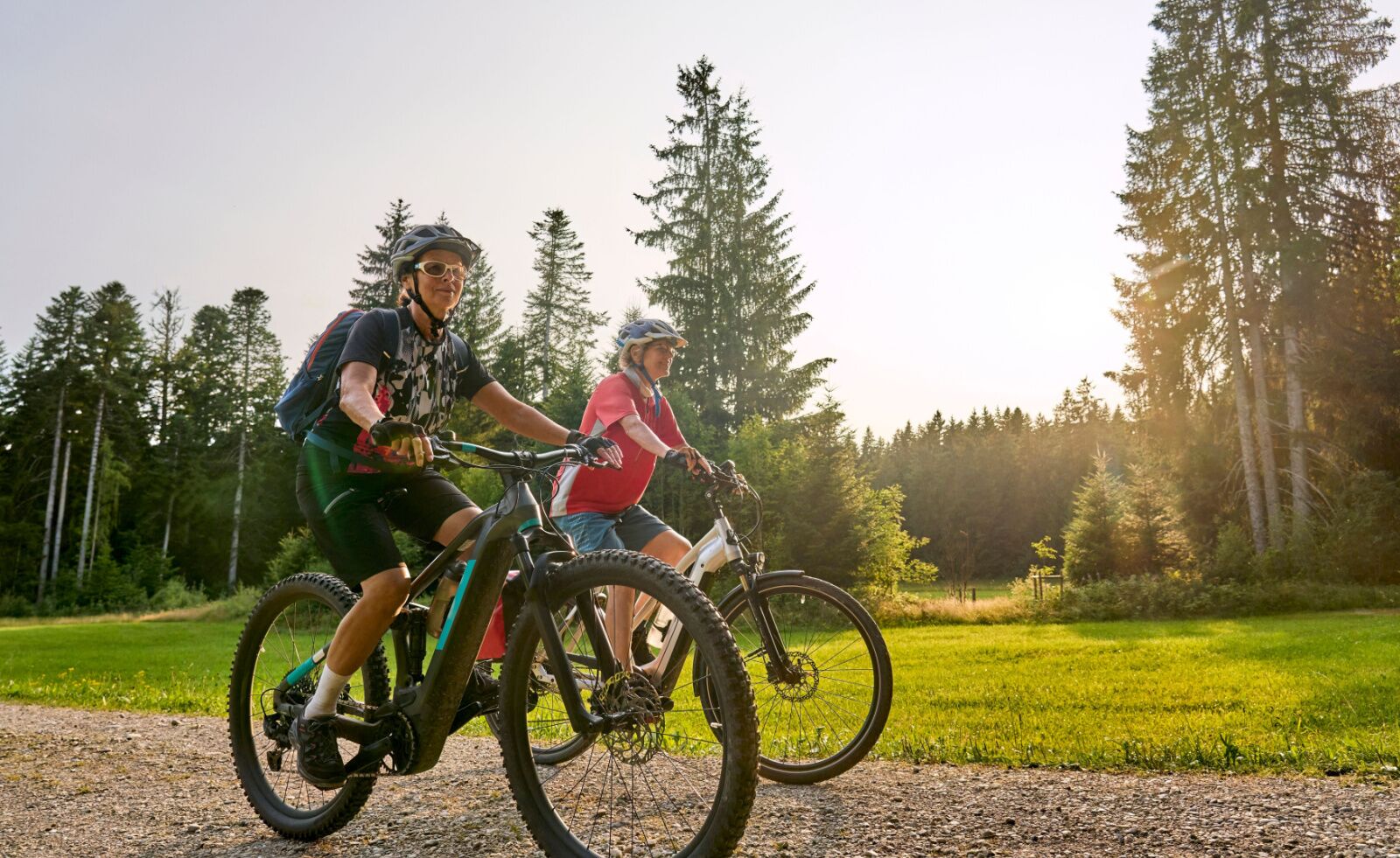
Allowing e-bikes on trails gives people who are older, younger, or recovering from injuries better access to public lands. Photo: Umomos/Shutterstock
Statista projects that global e-bike sales will reach nearly 80 million by 2030, with an annual increase of 10 percent between now and then. E-mtb sales specifically are already up 240 percent year-over-year through July 2023 compared with the year prior. That’s a monstrous economic impact and one that must be encouraged. Despite a 12.4 percent increase last year over 2022 (per figures published in the Wall Street Journal), US auto sales are down by about two million units compared to 2016 numbers.
There are two immediate conclusions here. First, in the bigger picture, we should embrace anything that gets people (who are physically able) out of the car and onto a bike. The Natural Resource Center at Colorado Mesa University here in Grand Junction found in a study that e-mtbs increase accessibility to public lands and allow users with certain physical limitations to venture further than they otherwise could. Survey participants noted they use this mode of riding to access steeper trails without as much riding fatigue, and ride from home to the trailhead.
Second, and most importantly as it pertains to this argument: e-bikes are out there, and people are going to ride them. We need clearly defined regulations as to where they belong and why, or else the chaotic incursions between trail riders are only going to skyrocket.
Where to draw the line
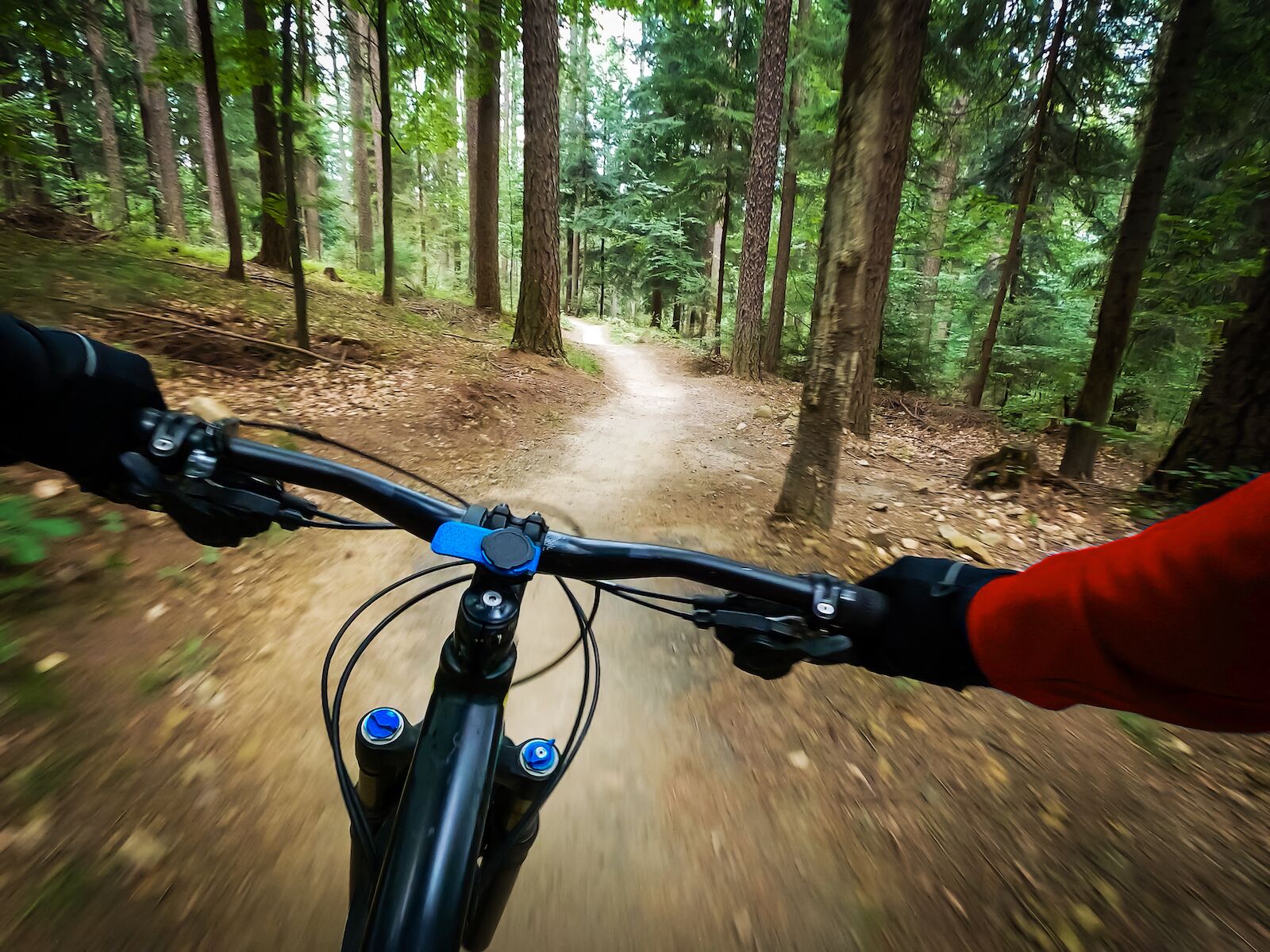
Photo: gorillaimages/Shutterstock
I ride a regular mountain bike quite a bit, and my main riding buddy is a firm believer that e-bikes shouldn’t be allowed on non-motorized trails. “They should be relegated to OHV trails,” he says.
I get that, and I don’t inherently disagree. I dislike pedaling hard up a mountain only to be overtaken by someone on an e-bike not even breaking a sweat. It hurts my ego and causes a slight momentary inconvenience. There are also safety concerns to be addressed, as it’s hard to blindly trust that someone whizzing up from behind you is going to follow proper passing protocol.
The line should be drawn at pedal assist Class 1 bikes. There are big differences in the two e-bikes my family has. One is pedal-assist, and the other is throttle-powered. And the difference is significant. The pedal-assist bike is capped at 20 miles per hour, and rarely reaches that speed except for on flat terrain (and with significant effort on the part of the rider). Yes, it goes faster uphill than a traditional bike, but you’re still burning calories to reach the top. The fact that you have to pedal –– hard — to reach the max speed keeps most e-bikers moving pretty slowly on the uphills, so it doesn’t make it any more dangerous for other riders.
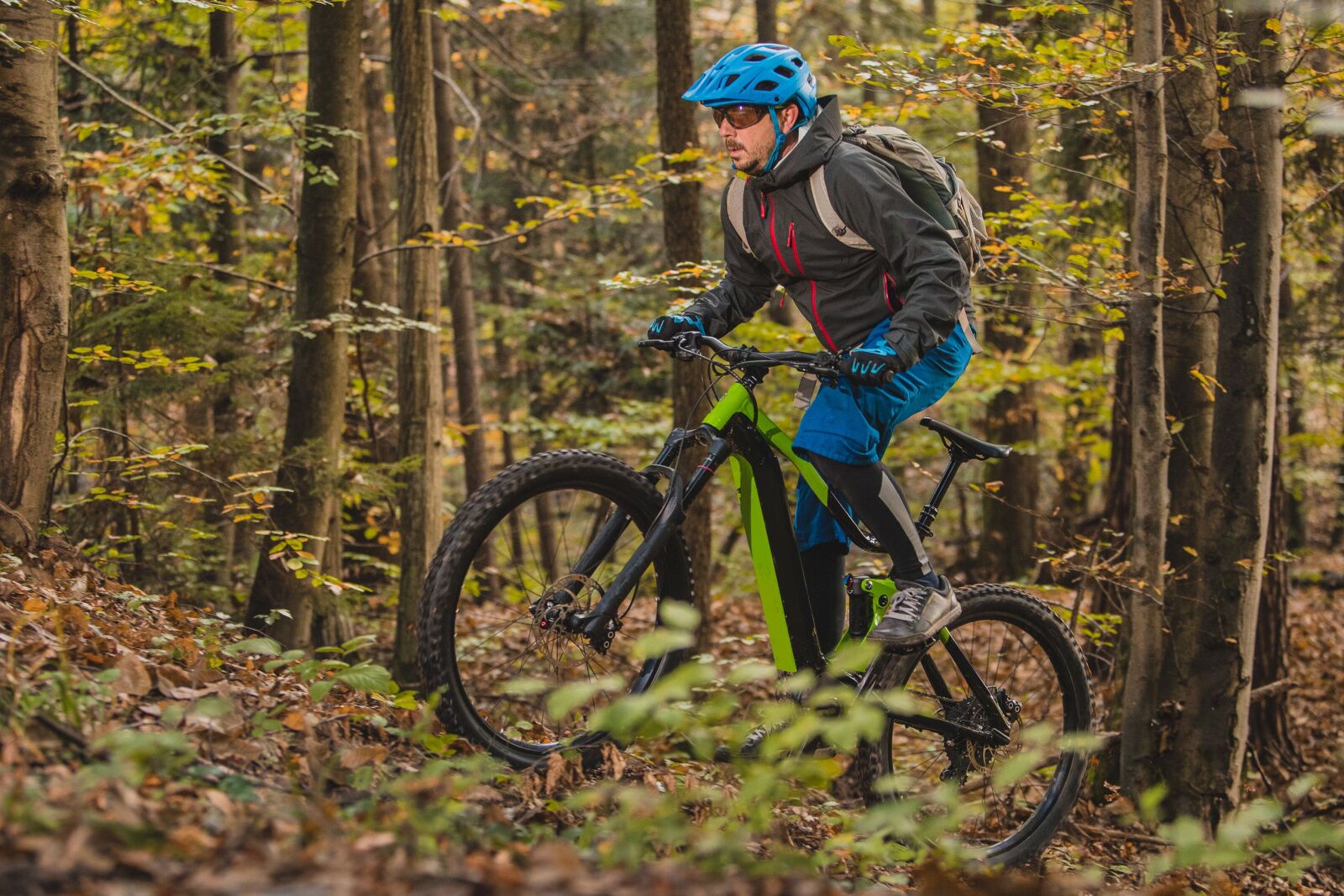
As long as mountain bikers are only using the assist from an e-bike on trails only when moving uphill, it’s okay with this author. Photo: Anze Furlan/Shutterstock
Many places, including BLM and US Forest Service lands, have regulations confining Class 2 and above e-MTBs to motorized trails in most areas. I support these decisions, and agree that any electric assist should be banned on downhills. But on the uphills, Class-1 e-bikes can help entry-level riders and kids enjoy trails that would otherwise be too difficult for them to climb. Overall, this benefit of increased access and more users outweighs the drawback of e-bikers occasionally moving too fast. As long as e-power is banned on downhills, it’s a good compromise.
The International Mountain Bike Association (IMBA) agrees. “IMBA supports shared “non-motorized” trail access for Class 1 eMTBs when conducted through a public process with stakeholder engagement,” the organization states on its website. “IMBA recommends shared ‘motorized’ trail access for other classes of eMTBs.”
Increased access to nature motivates more people to want to protect it. And the more people there are in favor of protecting public lands, the more likely we are as a county to minimize suburban sprawl, lower our CO2 emissions, and reach goals like the 30 by 30 initiative , which aims to protect 30 percent of the planet’s outdoor spaces by 2030. So as far as I’m concerned, if Class 1 e-bikes get a few more people involved in advocacy, then the positives far outweigh the negatives.